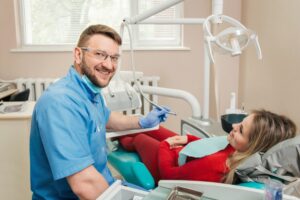Senior Research Scientist Resume Sample
Complete Name
Complete Address
Phone # / Cell Phone #
E-mail Address
RESEARCH SCIENTIST
Field of Interest: Cell and Molecular Biology
Focused, innovative, and performance-driven professional with strong molecular cancer biology and biochemistry background, with expertise in the development of anticancer drugs; interested in pursuing career in a challenging, stimulating, and fast-paced collaborative team environment within various fields. Adept at conducting initial research and development; deploying cutting-edge molecular and biochemical technologies; and developing and performing robust biochemical assays. Extensive experience in cell and free radical biology with special attention to liver and intestine. Experienced in both vivo animal models and in vitro cell culture. Demonstrate proficiency in various biotechniques related to biochemistry, molecular biology, microbiology, pathology, and cancer biology.
- Adept at consistently exceeding all expectations and providing highest level of service regardless of time constraints or special considerations.
- Effective and efficient in stressful and challenging situations.
- Demonstrate expertise in handling projects, from inception to completion.
- Utilize solid communication and interpersonal skills in working collaboratively with people of different cultural backgrounds.
RESEARCH SKILLS
Isolation Techniques
- Isolation of enterocytes, colonocytes, and intestinal brush border membrane from rat
- Subcellular fractionation from intestine and liver
- Isolation of BALF from lung
Lipid Studies
- Lipid extraction and separation of neutral lipids and phospholipids
Protein Studies
- SDS-PAGE, zymography, Proteome profiler arrays, GST-pull down assays, in vitro translation, Western blot, and immunocytochemistry
Microbiology
- Preparation of agar plates, aerobic and anaerobic bacterial culture, bacterial adherence study, and bacterial cell surface hydrophobicity assay
Molecular Biology
- Agarose gel electrophoresis
- Preparation of competent cells, bacterial transformation, DNA isolation from bacteria, transfection, PCR, RT-PCR, and Genotyping
Tissue and Cell Culture
- Propagation and utilization of various tissue cell lines (primary cells from mouse embryos, mouse embryonic stem cells, and Bovine aortic endothelial cells (BAEC), Mouse fibroblast cell line (NIH 3T3), Mammalian colon carcinoma cell line (HT-29), and Hepatocyte cell line (Hep2))
- Human Cancer cell lines such as Glioblastoma cells, Conventional Breast cancers, Triple negative breast cancers, Lung cancers, multiple myeloma, and B-lymphoma cells
Pathology
- Tissue processing for histology both paraffin and frozen sections and various histochemical and immunohistochemical staining techniques
Biochemical Techniques
- UV-Visible spectrophotometry, chromatography-TLC, HPLC, GC, centrifugation, oxygen uptake monitoring using biological oxygen monitor, enzyme kinetics, etc.
Animal Models
- Immunocompromised and immunocompetent mouse tumor models
- Implantation of tumor cells both subcutaneous and breast pad
- Mating, checking plugs, and weaning in mouse
- Mouse embryos
- Cre/lox Knockout mice models (conventional and conditional)
- Genotyping
- Surgical stress models
Surgical Technique
- Laparotomy in rats
EDUCATION
Doctor of Philosophy in Biomedical Science
Dissertation: “Effect of stress in the small intestine- Surgical stress in the small intestine and its effect on distant organ damage.”
XYZ Medical University, Chennai, Tamilnadu, India | Mar 2013
Master of Science Biochemistry
ABC University, Chennai, India | 2006
RESEARCH EXPERIENCE
SENIOR RESEARCH ASSOCIATE | DEC 2018–PRESENT
RESEARCH ASSOCIATE | JAN 2017–NOV 2018
DEPARTMENT OF MOLECULAR MICROBIOLOGY AND IMMUNOLOGY, DEF UNIVERSITY | LOS ANGELES, CA
Molecular Cancer Biology and Anticancer drug development
- Worked on specific combinations of the drugs (Celecoxib, its derivatives and HIV protease inhibitor, Nelfinavir) are found to be quite effective at killing different types of tumor cells via the aggravation of endoplasmic reticulum (ER) stress.
- Current research is focused on characterizing and establishing a novel type of treatment for breast cancer, specifically the “Triple Negative” Subtype.
- The discovery that the inhibition of COX-2 is not involved in the anticancer effects of celecoxib; rather through the blockage of calcium pump called SERCA that is located in the endoplasmic reticulum has been very intriguing and have potential applications in novel drug development.
- New compounds have been designed and synthesized to specifically target SERCA, which will potentially lead to superior anticancer drugs.
- Worked on a study which was focused on the cytotoxic effect of the newly designed analogs of celecoxib, their anticancer properties and cell death mechanisms especially in glioblastoma and breast cancer cells.
- Provide assistance to students taking up masters and doctoral degree in the laboratory.
POSTDOCTORAL RESEARCH ASSOCIATE | AUG 2013–DEC 2016
INSTITUTE FOR GENETIC MEDICINE, DEF UNIVERSITY| LOS ANGELES, CA
Intestinal role of cholesterol homeostasis
- Successfully studied the role of intestine in cholesterol homeostasis, with special attention to nuclear receptors. Nuclear receptors, including the oxycholesterol receptor LXR and its partner RXR, participated in maintaining cholesterol homeostasis in both liver and intestine.
- A widespread assumption has been assumed that LXR ligands are made de novo in the liver in response to excess cholesterol.
- Showed results that the intestine is also a source for oxysterol ligand like liver, but the role of intestine in overall cholesterol homeostasis is very much minimal through effectively conducting study with the intestinal enterocyte-specific RXRα-deficient mice.
Embryonic heart development
- Efficiently studied mechanisms that are responsible for the formation of the ventricular chamber of the heart during mouse embryonic development.
- Revealed IGF-2 as one of the candidate secreted from mouse epicardium that has mitogenic activity.
- Successfully hypothesized that epicardium is the source of secreted factors that influence ventricular myocardial proliferation and compact zone morphogenesis.
POSTDOCTORAL FELLOW | AUG 2011–JUL 2012
DEPARTMENT OF BIOPHYSICS, FGH COLLEGE | MILWAUKEE, WI
Role of nitric oxide in the toxicity or signaling of hydrogen peroxide
- Studied the role of hydrogen peroxide in signal transduction / apoptotic pathways that lead to cell death.
- Efficiently observed that hydrogen peroxide acts as a signaling molecule in endothelial cells when present at low concentrations, and is toxic when present in high levels.
- Came up with results that showed that the signaling of H2O2 is through nitric oxide which modulates proteasomal function in such a way that is favorable for cell survival.
GRADUATE RESEARCH | NOV 2016–JUN 2011
DEPARTMENT OF GASTROINTESTINAL SCIENCES, HIJ COLLEGE | INDIA
Surgical stress and its effect on distant organ damage
- Studied the role of oxidative stress on the pathophysiology of the gastrointestinal mucosa using a rat model of surgical stress.
- Observed that laparotomy and surgical stress can induce alterations in normal intestinal physiology affecting the proliferation, differentiation and migration of enterocytes, associated with structural and functional alterations in enterocyte mitochondria. These alterations in the intestine also bring about distant damage in organs such as lung, possibly mediated by free radicals.
- Found out that surgical stress results in quantitative and qualitative alterations in the luminal bacterial flora, in particular Escherichia coli, and all these changes together can bring about increased bacterial adherence onto mucosal epithelium, thereby leading to bacterial translocation. Intervention studies proved that the changes related to surgical stress are mainly due to oxidative stress which is occurring in the enterocytes. (Doctoral dissertation).
RESEARCH DONE APART FROM DOCTORAL WORK
Intestinal mucosal alterations during experimental liver cirrhosis
- Completed a collaborative project during Doctor of Philosophy studies; effectively conducted investigation on the role of oxidative stress in intestinal mucosal alterations in carbon tetrachloride-induced liver cirrhosis in rats.
- Efficiently observed structural and functional alterations in the enterocytes following cirrhosis.
- Intervention studies with allopurinol, which is an inhibitor of the enzyme xanthine oxidase; suggested a possible role for superoxide in cirrhosis-induced intestinal damage.
Retinoid metabolism in the small intestine
- Led the execution of a detailed analysis of retinoid levels along with metabolizing enzymes in diverse cell populations of the rat small intestinal epithelium.
- Observed that proliferating crypt cells have higher levels of retinoic acid (RA) as well as of the enzymes involved in its formation, such as retinaldehyde oxidase and retinol dehydrogenase as compared to villus cells. This suggested a possible role for RA in intestinal epithelial cell proliferation and differentiation. In contrast, villus cells showed increased retinol and retinaldehyde reductase enzyme activity and this showed the importance of reductase enzyme in the conversion of dietary beta-carotene to retinol via retinaldehyde.


